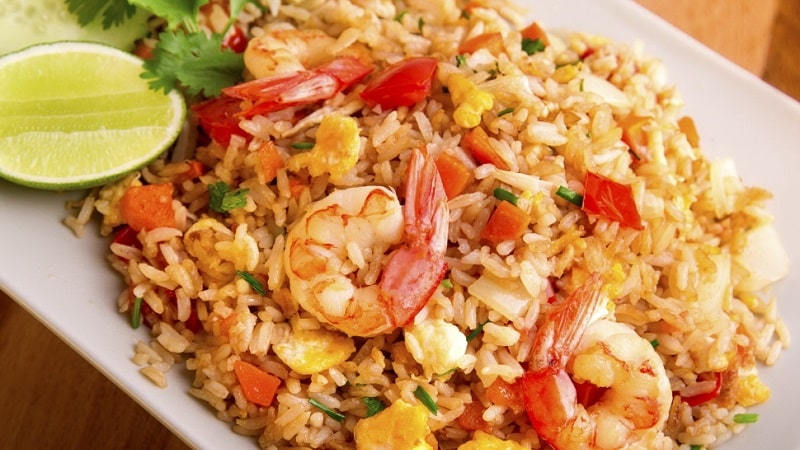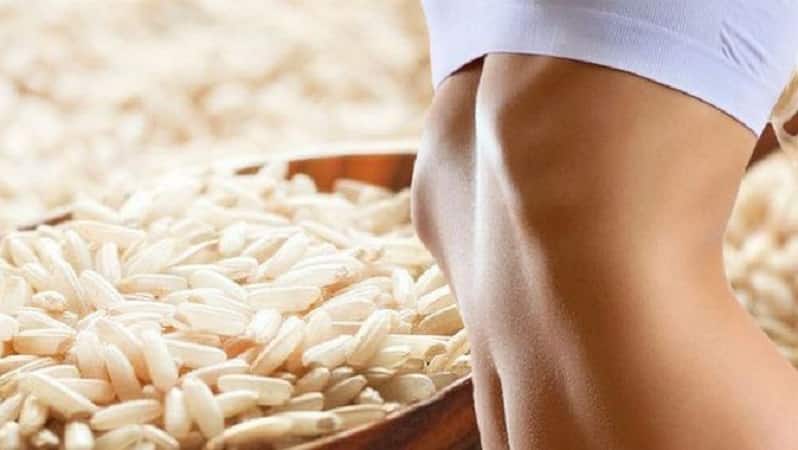Calorie content and nutritional value of boiled rice
Rice is one of the ancient and widespread cereal crops in the world. It is consumed both as porridge and as an ingredient in other dishes, and is included in the diet and daily menu. This popularity is due not only to the taste of the cereal, but also to its usefulness.
In the article you will learn what rice consists of, what calorie content it has, how much protein, fat and carbohydrates it contains, and what properties it has.
Composition and properties
Rice is a storehouse of useful vitamins and microelements. It contains a large amount of B vitamins: B1, B2, B5, B6, B9. It is also rich in vitamins H and PP.
Cereals also contain useful microelements: manganese, phosphorus, magnesium, iron, zinc, copper.

Caloric content of species
Calorie content of the product varies depending on how it is prepared.
How many calories are in boiled rice? The calorie content of rice boiled in water is approximately 120 kcal (without salt) or 136 kcal (with salt).
If you prefer to boil the rice, drain the water and add butter to make the dish more tasty and filling, then know that its calorie content is about 140 kcal.
If you are interested not only in the number of calories (kcal) of boiled rice, but also with various additives, then keep in mind that the calorie content of such a dish can be much higher: with raisins - 170 kcal, with vegetables - 150 kcal, with spices - 140 kcal .
The calorie content of boiled rice with meat or seafood is 150 kcal or more.
This is interesting:
Nutritional value of rice dishes
For adherents of a healthy and proper diet and people watching their weight and figure, it is important to know kbju, that is, not only calories, but also the ratio of kbju (proteins, fats and carbohydrates) in a dish.
100 g of this cereal contains about 90 g of carbohydrates, 7.5 g of protein and about 1 g of fat. Moreover, about 95% of carbohydrates are starch, the rest is sugar.

Useful properties of rice
Thanks to a large number of vitamins and microelements, cereals have a lot of beneficial properties.. B vitamins and potassium in the composition ensure normal functioning of the nervous system, heart muscles, and improve brain function. Thanks to the use of the product, the risk of formation of blood clots and plaques in blood vessels is minimized.
Amino acids in the composition improve metabolism, regulate the functioning of the gastrointestinal tract, remove toxins. Eating cereal improves the condition of the skin and hair, strengthens nails and teeth.
It is useful for men to include this cereal in their diet, since it regulates the production of the hormone testosterone. Rice is also useful for women, as it ensures the normal functioning of the reproductive system. It is useful for pregnant women to eat, because this culture not only increases the mother’s immunity, improves digestion and relieves edema, but also has a positive effect on the formation of the fetus.
On a note. Cereals are one of the first to be introduced into the diet of babies due to their safety for the growing body. This is a hypoallergenic, nourishing product that provides energy for a long time and strengthens muscles.

Consumption rate
Rice is a product with a balanced composition. But if you use it frequently in large quantities, you can harm your health.Therefore, it is recommended to eat no more than 150 g of cereal per day.
Possible harm and contraindications
First of all, It is important to rinse the cereal thoroughly before cooking, since during production it is treated with harmful substances that are unsuitable for consumption.
Rice has a high glycemic index - this suggests that its consumption increases the risk of type 2 diabetes. Therefore, it is better to approach your diet wisely and alternate it with other cereals.
If you are watching your figure, then keep in mind that porridge is a high-carbohydrate product, which, when adding oil, salt and other additives, also becomes high-calorie.
Read also:
Rice based diets
Rice based diets divided into soft and hard. It is recommended to go on a strict rice diet rarely and only in case of urgent need (and better yet, never).

Strict diets most often last 3 days and involve the use of boiled cereals (1 glass of dry cereal per day) without adding salt, pepper, other spices and additives. This diet can be diluted with natural juices.
There are options for extending this diet. For example, for 3 days they eat exclusively rice, on the 4th day they allow themselves fruit or chicken breast, then again they return only to cereals.
Softer diet options – rice, vegetables, chicken or rice, vegetables, fruits, chicken. Such diets most often last no more than ten days. The daily diet looks something like this:
- breakfast – rice with water (do not add salt);
- lunch – boiled rice with chicken breast;
- afternoon snack - orange;
- dinner - boiled cereal without salt.
The diet may vary depending on specific diet and day of the week.
The nine-day diet is also popular, when the first three days they eat cereal, the next three days - chicken in its various variations, in the last three days - vegetables and fruits in any form.
Important! There are many variations of diets with rice as the main ingredient. One thing remains unchanged: any strict diet is stressful for the body, so you should create a menu wisely, and it is better to consult with a specialist before doing so.
Conclusion
Rice is known for its beneficial properties and excellent taste. Cereals are included in many delicious dishes. It is included in the diet of not only adults, but also children. All kinds of diets are based on rice, but it is important to remember that moderation is needed in everything.
Be attentive to your body and try to make your diet healthy and varied.